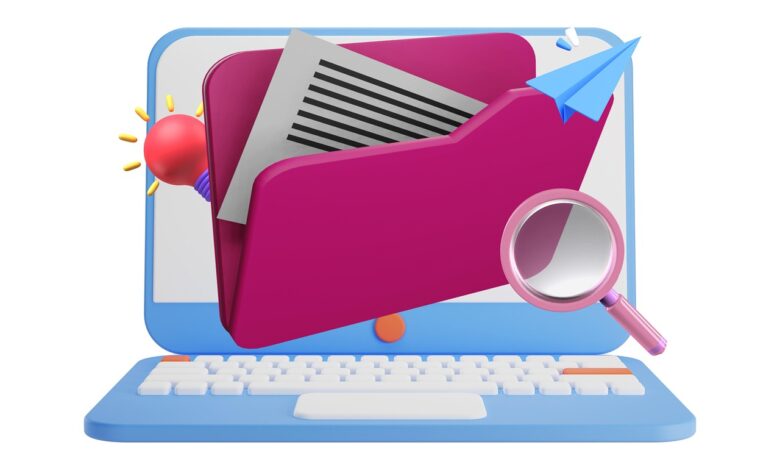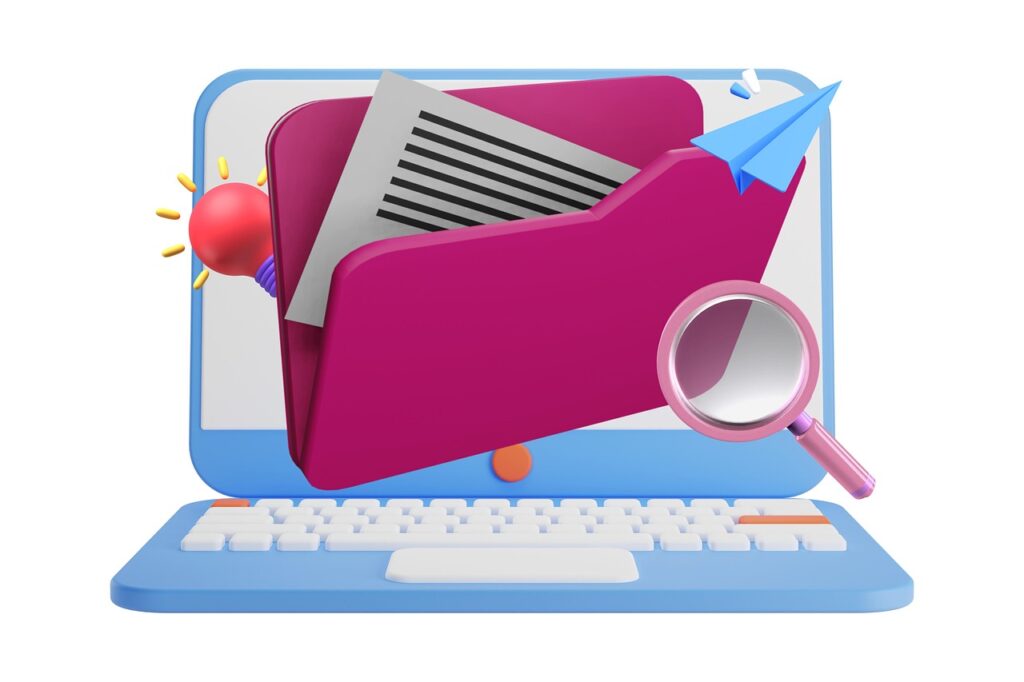How to Organize Files on Laptop – The Ultimate Guide

In today’s digital age, your laptop often becomes a repository of documents, photos, downloads, project files, old versions of things, and more. Without a proper system, your folders can become chaotic, you spend time hunting for files, and your productivity suffers. In this guide, we’ll walk you step-by-step through how to organize files on laptop — from planning your structure, setting naming conventions, decluttering, using tools, and maintaining the system over time.
Table of Contents
Why You Need to Organize Files on Laptop
Before diving into the “how”, let’s review why organizing your files is so important.
- Save time: When files are properly organized, you find what you need quickly instead of searching through dozens of folders. Research shows that a significant portion of workers list finding files as a top challenge.
- Reduce stress & digital clutter: A messy file system leads to frustration and cognitive overload. A proper system brings clarity.
- Improve system performance and backups: Fewer unnecessary or duplicate files means less wasted storage, fewer backups, and better performance.
- Better collaboration and version control: When you establish conventions and structures, sharing files with others or moving between devices is easier.
- Future-proofing: Good organization means when you revisit a project in six months or a year, you’ll understand the context, what goes where, and what version is the latest.
Because of all that, mastering how to organize files on laptop is a worthwhile investment of time.

Step 1: Plan Your File Organize Files on Laptop Strategy
The first step in organizing your files is planning. Without a plan you’re simply shifting chaos around. Here are the key things to consider.
1.1 Define Your Goals
Ask yourself: What do I want to achieve by organizing my files on laptop? Some examples:
- Easily find files in under 30 seconds
- Keep only active files on the laptop, archive older ones
- Establish naming conventions so versions are clear
- Align folders with projects, years, or topics
As the folks at Microsoft suggest: start by setting goals and criteria for success.
1.2 Audit Your Current Files
Before you reorganize, take stock:
- Which folders are the messiest?
- How many files do you have?
- Are there duplicates?
- What files do you rarely access?
- What file types are predominant (documents, images, spreadsheets, videos)?
Some people recommend moving everything into a temporary “inbox” folder so you can systematically distribute later.
1.3 Choose an Organizational Metaphor
Decide how you want to structure your folders. Common methods (and you can combine them) include:
- By project: Every major project gets its own folder.
- Good for people working in design, development, writing, etc.
- By date/time: Use years > months, or YYYYMMDD prefixes.
- Good for logs, archives, or when chronology matters.
- By topic/area: For example: Personal, Work, Finance, Photos, Archive.
- By client/name: Useful for freelancers dealing with many clients.
- Hybrid: A mixture, e.g., “Work → Project X → 2025-09-15” or “Photos → 2024 / Trip to …”.
1.4 Map a Folder Structure
Sketch a top‐level folder structure. For example:
C:\Users\YourName\Documents\
├── 01_Work\
│ ├── Project_A\
│ ├── Project_B\
├── 02_Personal\
│ ├── Finances\
│ ├── Health\
├── 03_Photos\
│ ├── 2024_Travel\
│ ├── 2025_Birthday\
├── 04_Archive\
Notice the numeric prefixes – these help enforce ordering. Some users adopt this approach.
1.5 Decide on Naming Conventions
Folder structure is one part; file names are equally important. Good naming ensures files sort, are searchable, and make sense at a glance.
Key principles:
- Use dates in a sortable format:
YYYYMMDDorYYYY-MM-DD. Reddit users suggest: “Organise computer files by always using the date format ‘YYYYMMDD’ as the start of any filename. This will ensure they ALWAYS stay in chronological order.” - Use descriptive titles, avoid “draft_final2.docx”.
- Use hyphens or underscores – avoid spaces if you might use the file across systems.
- Combine key metadata: e.g.,
20250915_ClientX_Report_v1.docx. - Keep consistency: once you pick a convention, stick with it.
Step 2: Declutter & Clean Up Before You Organize Files on Laptop
Before you start moving files into a new system, perform a clean-up. This step will save time and prevent organizing junk.
2.1 Remove Unnecessary Apps & Files
As part of a digital declutter, uninstall apps you don’t use and remove files that are outdated. This frees up space and makes the process smoother.

2.2 Identify Duplicate Files & Large Files
Scan for duplicates, especially large media files, and remove or archive them. Windows and macOS both have tools (or third-party apps) to help with this.
2.3 Archive Old Projects
If you have projects that are finished and seldom accessed, move them into an Archive folder or an external drive/cloud. This keeps your active workspace lean.
2.4 Clear the Desktop & Downloads Folder
Often your desktop and downloads folder are the “mess” zones. Move items from there into the proper folders. A clean desktop aids focus.
2.5 Backup Before You Start Major Moves
Prior to reorganizing large volumes of files, create a backup (external drive or cloud). If something goes wrong, you’ll have a fallback.
Step 3: Build & Implement Your Folder Structure
Now comes the implementation. Using your plan, start creating your folder structure and moving files into place.
3.1 Create Your Top-Level Folders
Using your mapping from Step 1.4, create the major folders. Numeric prefixes help maintain the order.
3.2 Set Up Subfolders
Under each top-level folder, decide subfolders. Example for “Work”:
Work/
2025_ProjectA/
Docs/
Spreadsheets/
Presentations/
Archive/
2024_ProjectZ/
For “Photos”:
Photos/
2024_Travel/
2024-05_Paris/
2024-08_Bali/
2025_Family/
2025-02_Birthday/
3.3 Move Files Carefully
- Move files from disparate locations (Downloads, Desktop, Documents etc) into the new structure.
- Avoid moving active files while they are in use.
- Use copy-then-verify then delete originals (in case the move fails).
- Keep a “migRATION_log.txt” to note where you moved things, in case you need to revert.
3.4 Apply Naming Conventions
As you move files, rename them according to your rules: date + descriptor + version. Example: 20250922_MeetingNotes_ProjectA_v1.docx.
3.5 Use Tags & Metadata (if available)
If your OS or file system supports tags / metadata (macOS Finder tags, Windows tags, Lightroom for photos, etc.), consider adding tags for easier search. Some guides recommend this for image files and other media.
3.6 Consider Cloud Synchronization
If you use cloud storage (OneDrive, Google Drive, Dropbox etc.), ensure your folder structure is synced and consistent across devices. Also ensure the online version mirrors your local structure.
Step 4: Adopt Maintenance Habits & Tools
Building the structure is just half the battle — keeping it tidy is the real key. Here are strategies and tools to maintain your file organization.
4.1 Set a Routine Review Schedule
Pick a regular time (weekly or monthly) to review your laptop’s files:
- Empty the inbox or unsorted folder.
- Move new files into proper folders.
- Archive old projects.
- Clean up the desktop & downloads.
As recommended by Microsoft’s article: “Schedule recurring file maintenance time to move misplaced files—and gently explain to people what the correct location is.” - 4.2 Use Shortcuts & Favorites
For folders you access frequently, create shortcuts (Windows) or aliases (macOS) and mark them as favorites. It speeds up navigation and prevents you from dumping files on the desktop.

4.3 Use File Explorer / Finder Features
- In Windows: Use “Sort by” or “Group by” (date, type, size).
- In macOS: Use “Smart Folders” for often‐accessed criteria.
- Use list view vs icon view when reviewing large folders.
4.4 Use Dedicated Tools / Cleanup Utilities
Consider tools for cleanup and monitoring:
- Duplicate file finders
- Large file summarizers
- Automated archiving tools
As the Fiverr blog suggests: this helps speed up your device and reduce burden.
4.5 Backup & Version Control
Make sure you have a backup strategy (cloud + external drive). For important documents or collaborative projects, version control (e.g., naming v1, v2 or using tools like Git for code) helps. Microsoft recommends version control strategies.
4.6 Archive & Cleanup Old Files
Once a project is over or a file hasn’t been accessed in, say, 12 months, move it to Archive. Create subfolders like Archive/2023 etc. This keeps the active area lean.
4.7 Use Search Intelligently
Modern operating systems have fast search; however search works best when file names and metadata are well formatted. If naming conventions are good, search becomes a tool, not a last resort.
Step 5: Common Mistakes & How to Avoid Them
Even with a good plan, many users fall into bad habits. Here are common mistakes and how to avoid them.
5.1 Keeping Everything on Desktop
Your desktop should not be a dumping ground. It slows system performance and hides files in a layer of confusion. Clean it regularly.
5.2 Inconsistent Naming / Mixed Conventions
When you rename some files inconsistently, the structure collapses. Choose your naming convention and stick to it.
5.3 Not Deleting or Archiving Old Files
If you never purge old files, you’ll eventually have a massive backlog that’s hard to manage. Set an “Archive” threshold and review periodically.
5.4 Ignoring Backup / Version Control
Organizing files but not backing them up defeats the purpose. Also ignoring versioning can lead to confusion (which is final? which draft?). Microsoft’s guide emphasises version control.
5.5 Over-Engineering the Structure
Some users spend too much time planning deep folder hierarchies. If the system becomes hard to use, people revert to dumping everything again. Keep it simple and logical.
5.6 Using Random File Names
Avoid names like Doc1.docx, NewFolder(2), FinalFinalVersion_final2.docx. These make search and retrieval very difficult.
Step 6: Special Use-Cases & File Types
Depending on your use case, there are specific tips for certain file types.
6.1 Photos & Media Files
- Organize by year → event → subfolder.
- Use naming like
20240515_Paris_Eiffel.jpg. - Use tags/metadata to record location, people.
- Store original files (high resolution) in one folder and web-friendly copies elsewhere. Suggestion from blogging community: store original 300 dpi image and a 72 dpi web-friendly copy.
- Regularly back up large media files (they eat space).
6.2 Work/Project Documents
- Use project folder structures: e.g.,
ProjectX/Docs,ProjectX/Presentations,ProjectX/Archive. - Use naming conventions including date and version:
20250922_ProjectX_Report_v1.docx. - Archive old project folders annually.
6.3 Downloads, Temporary Files & Desktop
- Redirect browser downloads to a “Downloads/Incoming” folder. Then, once daily/weekly sort them to proper folders.
- Treat the desktop like a shortcut board, not a storage place.
6.4 Cloud Storage Sync
- If you store files in cloud services (OneDrive / Google Drive), maintain the same folder hierarchy.
- Regularly check for sync errors, duplicates, or conflicts.
6.5 Shared / Collaborative Files
- Use shared folders with clear naming.
- Use version numbers or collaborative tools (like Google Docs version history) instead of multiple “final” files.
- Lock or label the final version clearly (e.g.,
…_FINAL_20250922.pdfor use version control). Microsoft suggests a clear version control strategy.
Step 7: Example Folder Structure & Workflow
To make this concrete, here’s an example of how someone might organize their laptop.
Example for a freelancer (mix of work + personal)
C:\Users\Me\Documents\
01_Work\
2025_ProjectAlpha\
01_Documents\
02_Spreadsheets\
03_FinalDeliverables\
Archive\
2024_ProjectBeta\
…
02_Personal\
Finances\
Health\
Travel\
2024_05_ParisTrip\
2025_08_BaliVacation\
03_Photos\
2024_Travel\
2025_Family\
04_Tmp_Inbox\
(temporary folder – files to sort weekly)
05_Archive\
2023_WorkArchive\
2022_PersonalArchive\
Workflow
- At end of day/week: empty “Tmp_Inbox” by moving files to correct folders.
- After a project completes: move project folder to
Archive\Year_ProjectName. - Monthly: review Downloads folder, Desktop, old files.
- Yearly: backup external drive, compress old archives if needed.
- Use naming conventions like
20250922_ClientMeeting_Alpha_v1.docx.
By following this structure and workflow you’ll maintain order and avoid the chaos of un-organized files.
Step 8: SEO Aspects & Why This Matters for Your Blog/Website
Since you may be creating content on this topic (e.g., blog posts, tutorials), here’s how you can optimize your article for SEO:
- Use your focus keyword “organize files on laptop” in title, first paragraph, subheads where natural.
- Use related keywords/phrases: “file organization laptop”, “organize laptop files”, “laptop file system structure”, “desktop file cleanup”.
- Use clear H2/H3 subheadings for structure (as we have done). Google values structured content.
- Include internal linking (if on your site) to related posts (e.g., “digital declutter”, “backup best practices”).
- Include external credible references (we have used Microsoft, blog articles).
- Use images/screenshots where relevant (e.g., folder structure diagram) with alt text (like “example laptop folder structure”).
- Use short paragraphs, bullet lists for readability.
- Make sure the page is mobile friendly (a ranking factor).
- Provide value to the reader: actionable steps, examples, pitfalls to avoid (this encourages time-on-page).
- Use meta description and title tag including keyword: e.g., “How to Organize Files on Laptop – 2025 Guide with Folder Structure, Naming Conventions & Maintenance”.
- Keep URL short and descriptive:
yoursite.com/organize-files-on-laptop.
Conclusion Organize Files on Laptop
Organizing your files on laptop doesn’t have to be overwhelming. With the right planning, folder structure, naming conventions, and maintenance habits, you can create a system that saves you time, reduces stress, and makes your digital life smoother.
Remember:
- Define your goals and audit your current state.
- Choose a logical folder structure and naming convention.
- Declutter and archive old files before moving.
- Move files into your new system, apply naming rules.
- Set up routine maintenance, backup strategies, and avoid common mistakes.
- Adjust for special use-cases: photos, projects, cloud syncing.
- If you write or publish about this topic, align with SEO best practices to reach a wider audience.
By mastering how to organize files on laptop, you’ll create a digital workspace that works for you — not against you. You’ll find files quickly, maintain focus, and keep your laptop’s performance in check.
Ready to get started? Pick one of your messy folders now, create the top-level structure, move five files into place — and you’ll be on your way to a cleaner, more productive digital life.

